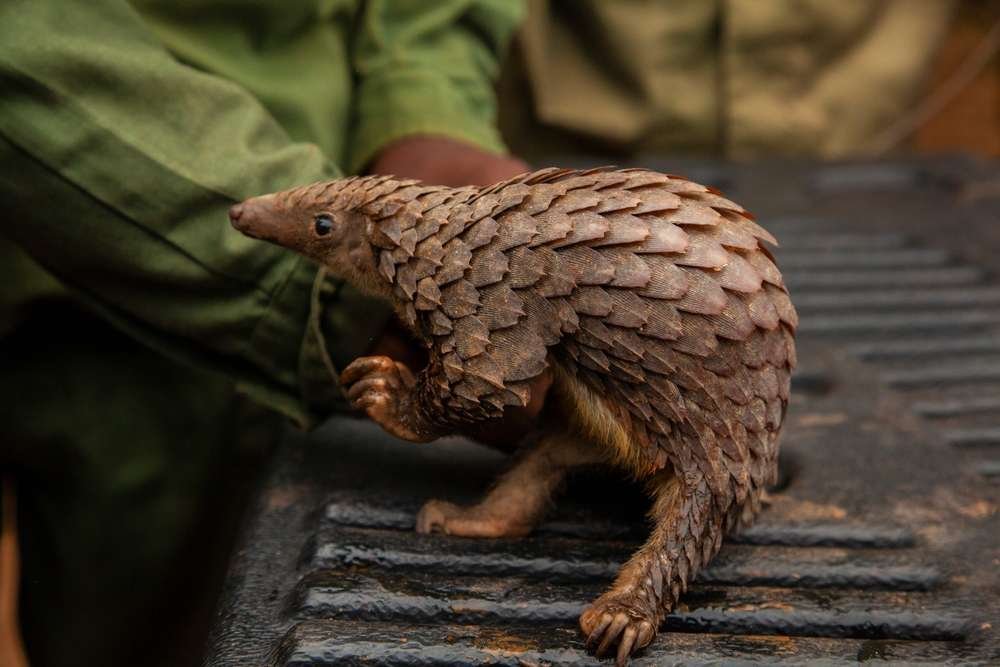Tree Pangolin
( white-bellied pangolin or three-cusped pangolin )
- Phataginus tricuspis
- IUCN Status: Endangered
- Trend: decreasing

- Kingdom: Animalia
- Phylum: Chordata
- Class: Mammalia
- Order: Pholidota
- Family: Manidae
- Genus: Phataginus
Share:
General Information
The tree pangolin is much smaller tree dwelling pangolin as compared to the much larger ground pangolin. It is also known as the white bellied pangolin due to the white fur it has on its underbelly.
Fun Facts
The tree pangolin is only found in North Western province in Zambia and more in West and Central Africa or the equatorial belt of Africa. They are the only mammals with scales. Their scales are made of keratin, the same protein that makes up human hair and nails. The scales are overlapping and protect the pangolin from predators. They are the most illegally trafficked wild mammal in the world. Pangolins are poached for their meat and scales, which are used in traditional Chinese medicine.
Description
Phataginus tricuspis is a relatively small pangolin. The head is small, and the snout is elongated. The feet are short, and each foot has five long curved claws. It also has a white underbelly of fur and a much longer and prehensile tail which is used to hang on to trees.- Length: 33–43 cm
- Tail Length: 49–62 cm
Ecology & Behaviour
The tree pangolin eats insects such as ants and termites from their nests, or the armies of insects moving on the trees. It relies on its thick skin for protection, and digs into burrows with its long, clawed forefeet. It eats between 150 g to 200 g of insects a day.
The tree pangolin can walk on all fours or on its hind legs using its prehensile tail for balance. It can climb up trees in the absence of branches. When walking on all fours, it walks on its front knuckles with its claws tucked underneath to protect them from wearing down. Its anal scent glands disperse a foul secretion much like a skunk when threatened. It has a well-developed sense of smell, but as a nocturnal animal, it has poor eyesight. When threatened they roll up into a ball and make aggressive huff noise when threatened, but that is the extent of her noise-making.
Conservation
As of 2019 its status was elevated and listed as, “Endangered” by the International Union For the Conservation of Nature.
Distribution & Habitat
The tree pangolin can be found in northwestern Zambia and throughout north,west central and east africa.
Interaction with Humans
The tree pangolin is subject to widespread and often intensive exploitation for bushmeat and traditional medicine, and is by far the most common of the pangolins found in African bushmeat markets.
No donation to this project yet.
| M | T | W | T | F | S | S |
|---|---|---|---|---|---|---|
| 1 | 2 | |||||
| 3 | 4 | 5 | 6 | 7 | 8 | 9 |
| 10 | 11 | 12 | 13 | 14 | 15 | 16 |
| 17 | 18 | 19 | 20 | 21 | 22 | 23 |
| 24 | 25 | 26 | 27 | 28 | ||


